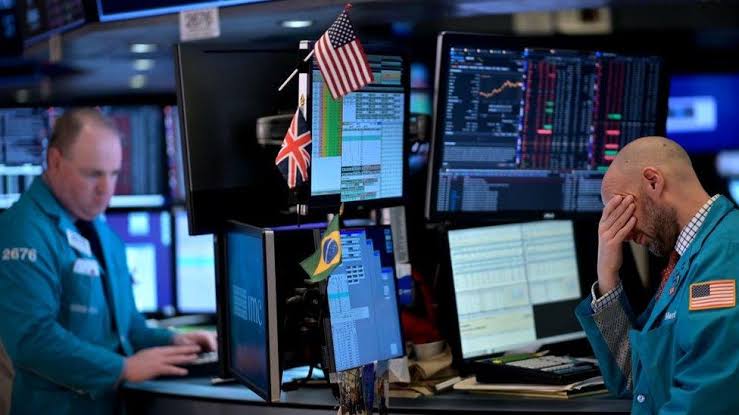Salou’s Official Statements on Sustainable Tourism: A Commitment to the Future.
In the sun-drenched coastal haven of Salou, Spain—a jewel of the Costa Dorada known for its golden beaches, vibrant nightlife, and family-friendly attractions—the local government has taken a bold step forward. On September 15, 2025, amid growing global concerns over overtourism, climate change, and cultural preservation, the Salou Town Council released a comprehensive series of statements outlining its vision for sustainable tourism. This initiative, dubbed “Salou Verde 2030,” aims to balance economic vitality with environmental stewardship, ensuring that the town’s allure endures for generations. As of October 8, 2025, these statements have sparked widespread discussion, with local stakeholders, environmentalists, and tourism operators weighing in on their implications. In this analysis, we delve into the core of these declarations, their historical context, potential impacts, and the broader lessons for Mediterranean destinations.
The release comes at a pivotal moment. Salou, with a population of just over 27,000, swells to nearly 200,000 visitors during peak summer months, driven by its proximity to PortAventura World, one of Europe’s largest theme parks. Last year alone, the town welcomed 3.2 million tourists, generating €1.2 billion in revenue but straining resources like water supplies and waste management. Mayor Pere Joan Pons, in his introductory remarks, framed the statements as “a necessary evolution, not a revolution.” The documents—five in total, spanning policy directives, action plans, and public commitments—were unveiled during a hybrid event at the iconic Luminous Festival site, attended by 500 locals and streamed to over 10,000 online viewers.
The first statement, titled “Environmental Guardianship: Protecting Our Coastline and Biodiversity,” addresses Salou’s natural assets head-on. It pledges a 40% reduction in single-use plastics by 2028 through mandatory beachfront bans and incentives for biodegradable alternatives in hotels and restaurants. Drawing on data from the European Environment Agency, which reported a 15% rise in Mediterranean plastic pollution since 2020, the council commits €5 million to coastal cleanup initiatives and mangrove restoration projects along the Cap Salou peninsula. “Our beaches are not commodities; they are legacies,” the statement reads, emphasizing partnerships with NGOs like WWF Spain. This builds on a 2023 pilot program that installed 50 smart waste bins, reducing litter by 25%. Critics, however, question enforcement, pointing to past fines that often go unpaid due to seasonal workforce turnover.
Complementing this is the second statement, “Resource Equity: Water and Energy in Harmony.” Water scarcity has long plagued Tarragona province, with Salou’s per capita consumption spiking 30% during tourist seasons. The council vows to retrofit 80% of municipal buildings with solar panels by 2027 and introduce tiered pricing for high-volume users, targeting a 20% drop in overall usage. A standout proposal is the “Blue Hour Initiative,” which caps pool fillings after 8 p.m. and promotes greywater recycling in resorts. Backed by hydrological studies from the Catalan Water Agency, this measure could save 1.5 million cubic meters annually—enough to supply 10,000 households. Yet, hoteliers like those from the Salou Hospitality Association have voiced concerns, estimating compliance costs at €2-3 million per large property, potentially raising room rates by 5-7%.
The third document, “Cultural Vitality: Beyond Sun and Sand,” shifts focus to Salou’s intangible heritage. Home to Roman ruins like the Villa Romana dels Munts and annual festivals such as the Carnival of Salou, the town risks cultural dilution amid mass tourism. The statement outlines a €3 million fund for local artisan markets, flamenco workshops, and multilingual heritage tours, aiming to increase cultural spending by visitors from 8% to 25% of their budgets. It also mandates that 30% of new developments incorporate public art installations reflecting Cambrils fisherfolk traditions. “Tourism must amplify, not erase, our stories,” declares the text, echoing UNESCO guidelines on sustainable cultural tourism. This resonates with younger demographics; a 2025 TripAdvisor survey found 62% of millennials prioritizing “authentic experiences” over beach lounging.
Economic sustainability takes center stage in the fourth statement, “Inclusive Growth: Jobs for Tomorrow.” Acknowledging that tourism employs 70% of Salou’s workforce, the council proposes diversifying into eco-adventures like kayaking in protected coves and agritourism in nearby vineyards. A job training academy, launching in spring 2026, will certify 500 locals in green hospitality skills, with subsidies for women and youth re-entering the market. Projections estimate 1,200 new positions by 2030, offsetting seasonal unemployment that hovers at 18%. Collaborations with vocational schools in Reus and Tarragona ensure curricula align with EU Green Deal standards. However, labor unions have called for stronger wage protections, arguing that low-skill roles still dominate despite the rhetoric.
Finally, the fifth statement, “Community Engagement: Voices in the Vision,” underscores participatory governance. It details quarterly town halls, a digital app for resident feedback, and impact assessments for major projects. “Salou thrives when Salou decides,” it asserts, committing to veto any development exceeding community-voted thresholds on noise or traffic. This democratic pivot addresses past grievances, such as the 2022 protests against a proposed mega-resort that threatened olive groves. Early metrics are promising: a post-release poll by the local newspaper Diari de Tarragona showed 78% approval, with suggestions for bike-lane expansions topping the list.
These statements do not emerge in a vacuum. Salou’s tourism model, born in the 1960s Franco-era boom, has evolved unevenly. The 1990s saw explosive growth with PortAventura’s opening, but cracks appeared by the 2010s—overcrowded promenades, algal blooms from sewage runoff, and a 2024 heatwave that hospitalized dozens. Globally, parallels abound: Venice’s €5 entry fee and Barcelona’s anti-Airbnb crackdowns highlight the overtourism backlash. Salou’s approach, informed by a 2024 Deloitte consultancy report, positions it as a proactive leader in the Balearics-inspired “quality over quantity” paradigm.
Implementation will be key. A cross-departmental task force, led by Councilor for Tourism Maria López, will oversee progress, with annual audits published transparently. Funding blends EU NextGenerationEU grants (€15 million allocated), regional subsidies, and a 1% “green levy” on luxury stays—projected to raise €800,000 yearly without deterring budget travelers. Challenges loom: political shifts post-2027 elections could dilute commitments, and external factors like rising sea levels (Salou’s coastline erodes 2 cm annually) demand agility.
For residents, the statements herald empowerment. Long-time shopkeeper Joan Ramirez told local media, “We’ve shouted for change; now it’s scripted.” Environmentally, success could cut Salou’s carbon footprint by 15%, per modeled scenarios from the University of Barcelona. Economically, sustained tourism might stabilize GDP contributions at 65%, fostering resilience against recessions.
Broader implications ripple outward. As the Costa Dorada’s gateway, Salou influences neighbors like Cambrils and Sitges. Its model could inspire other sunbelt towns from Algarve to Antalya, proving sustainability isn’t austerity but savvy reinvention. Yet, true victory lies in metrics beyond numbers: cleaner seas, vibrant festivals, thriving small businesses.
In conclusion, Salou’s statements mark a watershed. They weave environmental imperatives with cultural pride and economic pragmatism, inviting collaboration over confrontation. As Mayor Pons noted, “We built this paradise together; let’s preserve it the same way.” By 2030, Salou could exemplify how destinations dance with destiny—adapting, not just surviving. The world watches, waves lapping at the shore, as this coastal chronicle unfolds.



